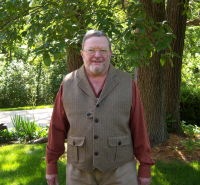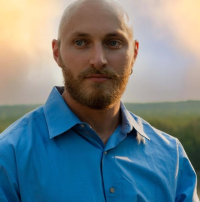.
.
The Sunday Poem is published weekly, and strives to include the poet reading their work.
Alan and Arlan Yount read their poem at its conclusion.
.
.
___
.
.
Hans Bernhard (Schnobby), CC BY-SA 3.0 , via Wikimedia Commons

Duke Ellington Big Band, 1963
.
___
.
Duke Ellington’s Big-Band Orchestra:
Live at Basin Street East, New York City.
Summer 1964.
.
One: Inside The Club
We got inside the club, early,
…………..and dad said:
“let’s try and get a table
…………..right in front of the band.”
He said: “we will hear, & feel,
…………..as though we are in the band.”
(you won’t believe this)
…………..We sat down
at a table for two, in the front row.
…………..It must have been six feet away from
where the sax section would be.
.
Two: Duke Plays
Duke’s piano
…………..was just a couple
of feet to our left.
…………..We were close indeed.
All the musicians began
…………..to come out.
When Duke came out
…………..to the piano,
he gave a slight, sophisticated
…………..nod and bow, before sitting down.
At once he “touched those
…………..ivory keys,” as they say.
You knew for sure
…………..the melody he started was his theme song:
“Take the A train,”
…………..written by his great friend,
Billy Strayhorn.
.
Three: Billy Strayhorn is Introduced
Billy Strayhorn
…………..was invited out to the stage
by Duke,
…………..after he played “Take the A Train.”
He gracefully acknowledged
…………..that Billy wrote the song
(the two of them had written
…………..several other songs together).
“Take the A Train” became
…………..“the opener”
and the main theme song
…………..for the band.
.
Four: Johnny Hodges Plays
Johnny Hodges played the lead
…………..alto sax.
Sounding so low
…………..with tones – absolutely haunting…
How could you play
…………..in one song, solitude!
Deftly, desolate
…………..and so, so, softly delightful.
The tone & expressions from his alto sax
…………..… could be perceived as:
‘languishing in a lot of love
…………..down in him for sure.’
And in the song isfahan
…………..a far east tune,
notes were gentle and as smooth
…………..as poured hot liquid gold, &,
bent just like he wanted them to bend.
.
Five: Cat Anderson Plays
Cat Anderson played
…………..first, and lead trumpet.
He could soar on
…………..high scream’n notes
as though floating them
…………..up above the band and beyond.
Possibly higher
…………..than Maynard played,
possibly higher
…………..than Miles himself.
.
Six: Paul Gonsalves Plays
Paul was the second
…………..most popular player
besides
…………..Johnny Hodges.
“Satin Doll” was written by Duke and published in 1953.
…………..It would become,
in just a few years,
…………..a jazz ‘standard.’
Paul Gonsalves always played
…………..tenor sax on “Satin Doll.”
He played it
…………..as an instrumental.
How could Gonsalves …
…………..go
slower
…………..& with such great sound?
He whispered his way through,
…………..with what has defined:
the so, so, smooth
…………..sound of “Satin Doll.”
.
Seven: Cootie Williams, Plays
Making his trumpet talk
…………..using what was known as
the growl
…………..and plunger style –
especially with his song
…………..“Minnie the moocher” –
he knew
…………..how to make his trumpet really
“sound”
…………..and talk so different.
.
Eight: Harry Carney Plays
Harry Carney
…………..was
the main
…………..baritone sax player.
He played
…………..with that
circular breathing,
…………..right in front of us.
It seems,
…………..he went on forever
for several sixteen
…………..bar blues.
How did he do that?
…………..we saw
no time
…………..that he took a breath.
And,
…………..we sat
very close…
…………..Just six feet away.
(by the way. Amazing!)
…………..it was absolutely
……………………….amazing!
……………………………….And sounded like
……………………………………..the best bari sax
……………………………………………..ever played.
.
Nine: When The Concert Was Over
Dad and I
…………..walked out
…………..…………..on to basin street.
After listening
…………..to three full sets,
the jazz music, was finally over …
…………..the silence… hung on…
as though the air around the band
…………..…………..would not let us go.
Dad said: “you play trumpet
…………..and I play tenor sax!
We should join
…………..a big band, right now!”
I said, “for sure!”
you said, out of first thought:
“How about applying
…………..for duke’s big band
just the two of us!
…………..right now!”
.
..
.
Listen to Alan Yount and Arlan Yount read their poem
.
.
Postscript:
This poem is dedicated to Arlan Yount, my son, who moved back to Columbia, Mo, after my heart operation. He was the first one to show up that day, and asked me what I wanted. I asked him, “Can you go out and get me a copy of Old Man And The Sea,and read it to me.”
This is also dedicated to my mother, Jane Yount, and to my daughter
Anna Yount, who came to be by my side very early, and we held hands
together.
This is also dedicated to my wife, Jerra Groman, and to Stacie Naies, Jerra’s daughter, who came to St. Louis to see me.
It is also dedicated to my father, Thomas Yount, who played tenor sax,
and taught me how to play trumpet. We practiced every night together
for years.
Dad asked me once if he could play Benny Goodman’s “Let’s Dance.”
I was amazed, how he played perfectly playing along to Goodman’s L.P.
-Alan Yount
.
.
___
.
.

Alan Yount has published poetry for over 50 years. His poems have appeared in WestWard Quarterly (featured poet for summer, 2018). Big Scream, Spring: the Journal of the E.E. Cummings Society, and Waterways. He has been in three anthologies: Passionate Hearts, Sunflowers.and Locomotives: Songs for Allen Ginsburg, in which Alan was one of 31 poets, along with Gary Snyder and Lawrence Ferlinghetti. Also Chrysalis Reader. Alan plays trumpet and has led his own dance band.
.
.
___
.
.

Arlan Yount has a degree in psychology and is currently furthering his education. Writing poetry and short stories illuminates his time as a leisurely passion while also focusing on the fitness, health and psychological well-being of himself and others as a behavioral-fitness coach. He currently resides in Columbia Missouri and be reached at [email protected] or on Instagram at arlanyount
.
.
Listen to Duke Ellington and His Orchestra play “Satin Doll”
.
.
___
.
.
Click here to read previous editions of The Sunday Poem
Click here for information about how to submit your poetry or short fiction
Click here to subscribe to the (free) Jerry Jazz Musician quarterly newsletter
Click here to help support the ongoing publication of Jerry Jazz Musician, and to keep it commercial-free (thank you!)
.
___
.
Jerry Jazz Musician…human produced (and AI-free) since 1999
.
.
.





































Nice collaboration. Good job of creating your experience of a seminal event in your lives. I envy your experience. I saw Count Basie near the end of his life in Kansas City, but I never got to see The Duke anywhere except on television.
I feel that I’m right up front!!
Hi “Poetry Brothers” Michael L. Newell and Daniel Brown. Thanks so much for the comments,
they are really appreciated. I just turned 76, but this still helps fuel the fire. It was a great
experience … sitting 5 or 6 feet away from the middle of the sax section. The “Duke’s”
piano was about 9 or 10 feet away. You could see how he played “The Keys,” very well.
Sharing a very special time, the poem pulls you into the experience of seeing and hearing Duke Ellington’s sophisticated and talented band. A multigenerational encounter.